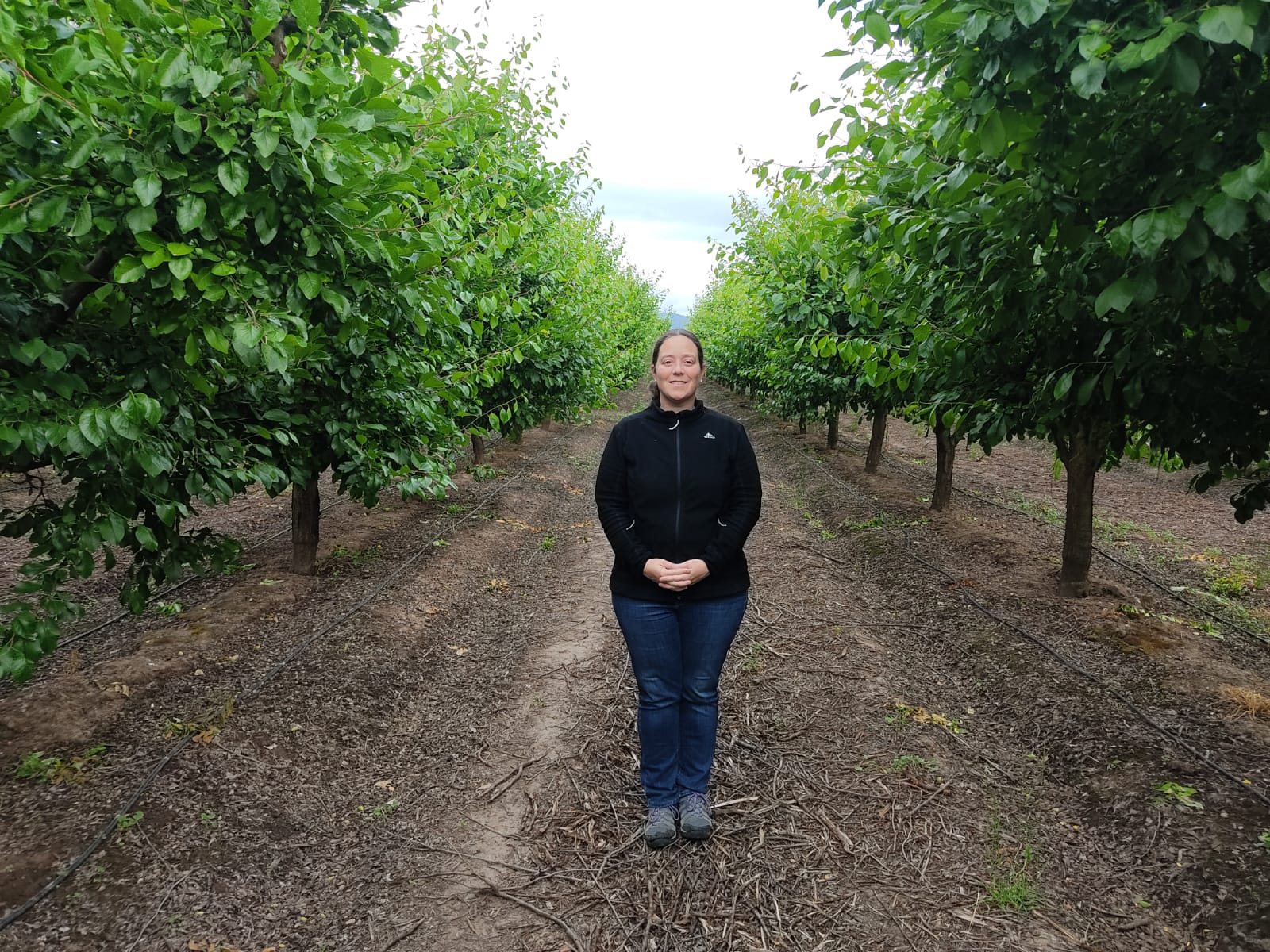Prunesco’s Zonal Agronomist, fruit advisor at Ciruelo D’Agen and member of the Chileprunes Technical Committee, Rosario Larraín, gives her a look from the orchard.
In Chile, the period of development or fruit filling began a few weeks ago, which is valid for various Chilean export products, and of course, also for the D’Agen plum, which after a drying process is offered as prunes to more than 70 countries in the world.
And so far it’s going well. This, after a normal flowering, not as abundant as last year where there was a greater supply of flowers, but with warm temperatures that are beneficial for the plum tree, indicates the Zonal Agronomist of Prunesco and member of the Technical Committee of Chileprunes, Rosario Larraín.
Depending on the area, until the first days of November, the thinning stage was worked in Chile, where it is concluded that no more than 15 to 20% of the orchards should have been thinned, with trees that came with 6,000 – 7,000 fruits. to leave them around 3,000 to 4,000. “There are years when orchards have 10 or 12 thousand fruits per tree, which has forced us to thin out more than 50% of the fruit load. This season the thinnings were more moderate since the number of fruit set was not so high”, says Rosario Larraín, although she clarifies:
“The ideal production for an orchard is the maximum possible load that allows it to obtain a certain caliber, according to its productive potential, its phytosanitary and nutritional status, the type of wood that compose it and the management in general. All of the above, added to the commercial conditions of each season, allows us to define the appropriate number of darts for each tree in pruning.”
Indeed, some orchards can be left with 2,500 fruits, others 3,500 or 4,000 to deliver the expected production.
The current one, in short, has been a good season, she says. Thinning 15-20% is a moderate amount, while 70% of the orchards in the Colchagua area (where most of the D’Agen plum cultivation in Chile is located) are under normal loads, according to the potential they have and only 5% could be dragging a poorer flowering and a low load in relation to their potential, but that happens in fully identified plots.
“You see a slightly smaller load than last year, but with better sizes. The fruit is growing very well,” says the Prunesco expert.
The first half of November there have been surprise rains in the central area of Chile, including the Colchagua area. Does this not affect the fruit? “This rain does not cause problems, since we currently have green fruit with no sugar concentration. The one that scares the most is the rain between flowering and setting, because it washes the pollen, and after it, frosts could eventually come. The rain that occurs from the end of December onwards is also very problematic, when there is more mature fruit that can suffer from splitting. In addition, the closer to harvest, the worse, since the fruit is dried in drying fields, which must be obviously dry, otherwise the probability of generating fungus in the fruit increases.”
In Chile, in a normal period, the dehydrated plum harvest starts between February 5 and 8.
The marathon is long. Victory still can’t be claimed. But so far everything is going well: the flowering period and the rainfall were positive, the fields have had optimal soil moisture, pruning had an abundant workforce, there were no significant frosts, but there was a significant accumulation of cold hours, and the weather also accompanied the fruit set period.
Prunesco feature
Prunesco, born in 1941, is the largest exporter of prunes in Chile, with a 20% market share.
Founded in 1941 by a group of producers who were looking for better conditions to export their products, today the company has become the largest in Chile, a leader in Latin America and one of the three most important in the industry worldwide, thus reaching to more than 50 markets on five continents.
It has more than 100 producers of various sizes, with surfaces ranging from 3 hectares to others with around 270, totaling more than 3,500 hectares.
All Argentine prunes exports come from the province of Mendoza. It is about 10,500 hectares, although 11 years ago, there were 18,000. 80% of what is exported comes from the south of the province, from San Rafael and Alvear, while the rest comes from the East. 25 thousand tons equivalent to US$ 60 million are exported, figures that correspond to an average of the last 15-20 years.



